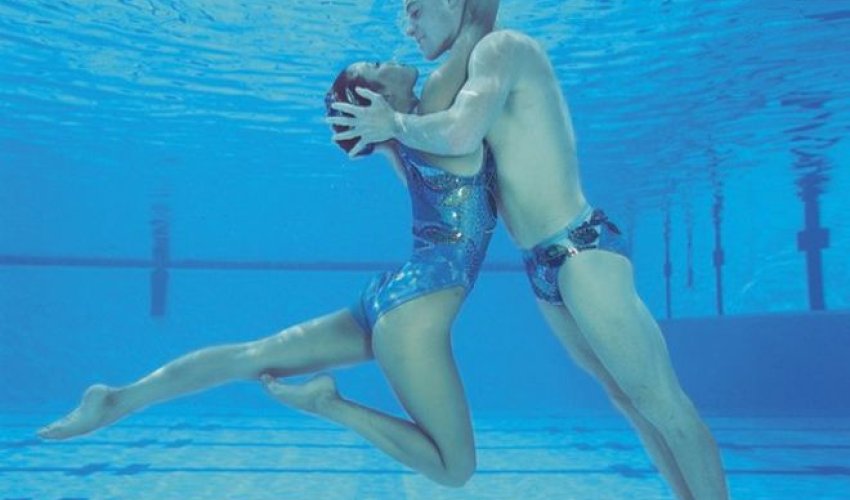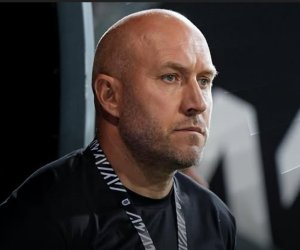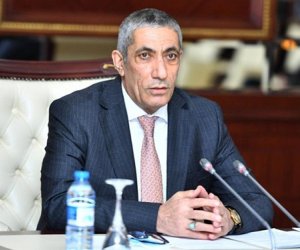Why can't men be Olympic synchronised swimmers?

At the World Aquatics Championships, which begin this weekend in Russia, men will be competing in synchronised swimming for the first time. Men were a part of the sport at its inception, but until now they have always been barred from competing at the highest level. Will the door to the Olympics open next?
There is nothing in the world that can prevent 25 July 2015 from being the best day in Bill May's life. "It's something that I have dreamed of my entire life," he says, "to step out on that deck with the world's best."
Many already count May as one of the world's great synchronised swimmers. Next weekend, 11 years after he retired, he will get his chance to prove it. Whether or not he ends up winning his event, the chance to compete in the US team at the World Championships in the Russian city of Kazan is the delayed culmination of a career that has brought triumph and frustration in equal measure.
May made his big splash in 1998, when he and his partner Kristina Lum won the duet event at the US National Championships, then took silver at the Goodwill Games. He was named USA Synchro's athlete of the year in 1998 and 1999, and he went on to win 14 national events as well as titles in France, Germany, Italy and Switzerland.
But he was prevented from performing at the World Championships or the Olympics because it was seen at the highest level as a sport for women. May's coach Chris Carver said: "Let me tell you this - he not only would have made the team, he would have been among the very top of the competitors on the US team."
May retired and started a stint that still continues, as the male lead in O, a water-themed Cirque du Soleil production in Las Vegas.
Then suddenly last November there was an announcement from Fina, world swimming's governing body, that mixed technical and freestyle duets would be on the programme of the World Championships. Bill May came out of retirement, and he brought two former teammates with him.
His partner for the technical routine is former Olympian Christina Jones, 27, who also appears in O, and for the free routine he will be reunited with the woman with whom he first won the US National Championship 17 years ago - Kristina Lum Underwood.
By synchro standards, this pair is positively antique. While the next oldest member of the US team is 25, May is 36. Lum Underwood, meanwhile, is 38 - and had a baby in January.
"I sort of felt guilty at the thought of leaving my children, leaving my husband," she says. "It was just one of those things, that I knew I would regret if I didn't at least try to do it. This seems like the perfect way to finish that part of our story."
She appears in a different Las Vegas show, Le Reve - The Dream. It is fate, May says, that all three of them were still involved in synchro, and were living in the same city, so that they could train together.
But they were not the only ageing athletes to receive the sudden call-up late last year. Benoit Beaufils, 37, will be representing France in the free routine with his partner Virginie Dedieu, even though he retired from competition in 1998. He and May have known each other for 20 years, and their lives have followed a remarkably similar trajectory.
Beaufils grew up in the small town of Montauban, near Toulouse. Like May, he got into synchronised swimming because a sister was attending classes. Already a keen gymnast, the six-year-old Beaufils found it impossible to sit on the deck and watch the other children splashing about having fun.
"Whenever I had the chance I just jumped in the water," he remembers. "I was just trying to copy what the girls were doing. Without really being coached, I just caught on to the sport."
One day, a recruiter came to watch the class, which was coached by his mother. "My mum said, 'Don't go in the water tonight. There is a very important lady coming.'" French sport should be thankful that the mischievous Beaufils ignored this instruction, and was singled out by the spotter as having an unusual natural talent.
The club began to create special roles for him. His routines included playing Charlie Chaplin and performing a Rocky solo to Eye of the Tiger. "There was always something I could bring to the part that the girls couldn't and I think my coaches were keen on that. They didn't want me to swim to Swan Lake, you know?"
He was teased, of course, but he says the snide remarks - being called "a queer" by classmates - just bounced off him. "I had a very hard shell on me," he says.
Eventually, Beaufils relocated to Paris, and in 1995 he became the French junior champion - competing mostly against young women - and was talent-spotted once again, this time by Chris Carver, who enticed him to go to California to train with the elite Santa Clara Aquamaids the following year. Bill May was already in the team, having moved from the East Coast when he was 16.
They trained eight hours a day, six days a week. "My mum, she used to work two jobs when I moved to California, just so that I could swim and pay my rent," May recalls.
Synchro had been an Olympic sport since 1984, but only as an event for women. Nevertheless, the men kept training in the hope that a chance might come for them to compete at the top international level, at the Olympics or World Championships.
"It was frustrating, but I kept wanting to compete," says Beaufils. "Knowing that there was Bill also at the time - I would be France, he would be the US - we kept thinking, the better we get, the better the chances that they will change the rule. Unfortunately, they never did."
(BBC)
www.ann.az
Latest news 
More news 



































 Photo
Photo 



 Video
Video 

